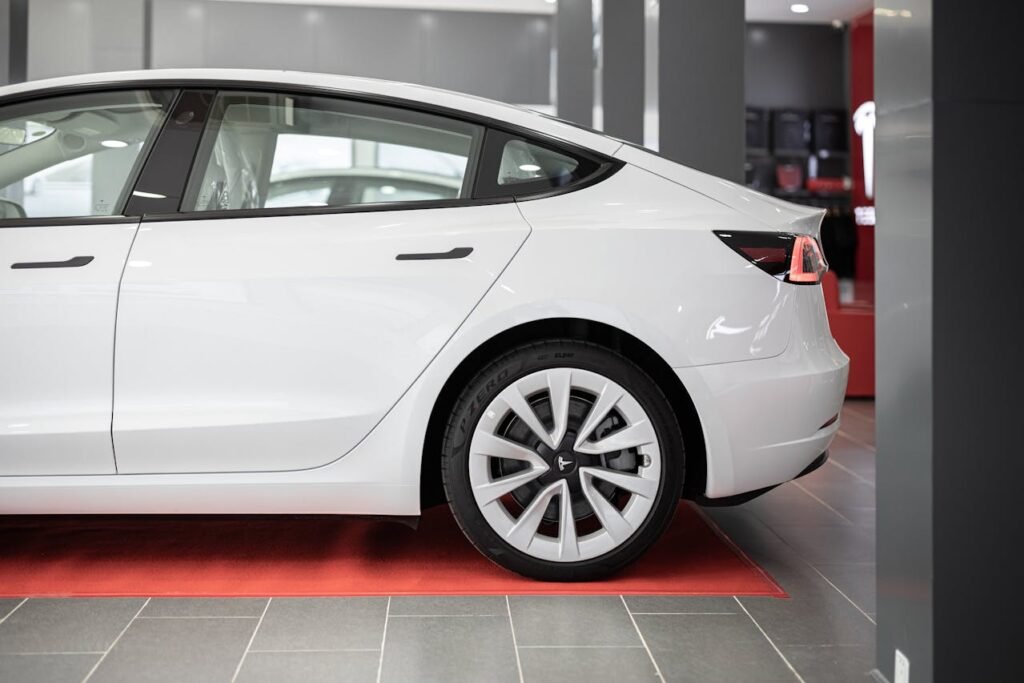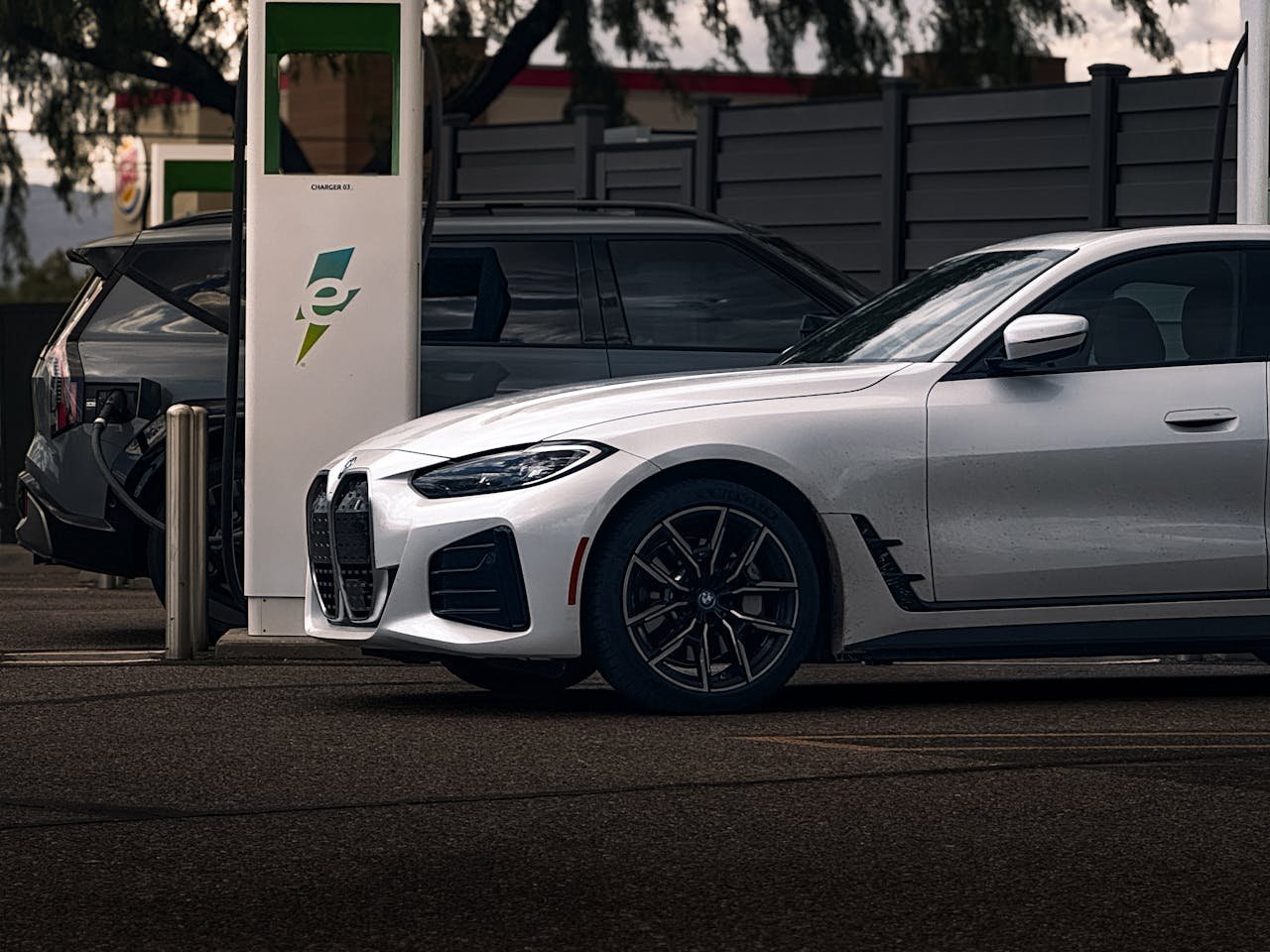The electric vehicle landscape has transformed dramatically over the past few years, with affordable options finally reaching the mainstream. In 2025, buyers no longer need to choose between accessibility and capability—the sub-$40,000 segment now offers impressive range, performance, and features that were previously reserved for luxury models. This comprehensive guide examines the Best Electric Cars Under $40,000, helping budget-conscious consumers make informed decisions when transitioning to electric mobility.
The Evolving Affordable EV Market
The democratization of electric vehicles has accelerated as battery costs continue to decline and manufacturers achieve economies of scale. While early affordable EVs often compromised on range and features, today’s budget-friendly options deliver compelling packages that satisfy most drivers’ needs.
When evaluating vehicles in this price segment, we’ve considered several key factors:
- Real-world range and efficiency
- Charging capabilities and speed
- Performance and driving dynamics
- Interior space and practicality
- Technology and safety features
- Overall value proposition
All prices mentioned reflect the manufacturer’s suggested retail price (MSRP) before any federal tax credits or state incentives, which may further reduce the effective purchase price depending on your location.

Hyundai Ioniq 6 Standard Range: Best Electric Cars Under $40,000
The Hyundai Ioniq 6 Standard Range represents perhaps the most well-rounded package in the affordable EV segment. Starting at $39,900, this aerodynamic sedan maximizes efficiency without sacrificing style or substance.
The sleek, wind-tunnel-shaped body contributes to an impressive EPA-estimated range of 270 miles despite using a smaller 58 kWh battery. This efficiency-first approach pays dividends in real-world driving, where the Ioniq 6 Standard Range consistently exceeds efficiency expectations particularly in highway scenarios.
Built on Hyundai’s dedicated E-GMP platform, the Ioniq 6 benefits from 800-volt electrical architecture enabling exceptional fast charging capabilities. At compatible stations, the battery can charge from 10% to 80% in approximately 18 minutes—a figure that matches or exceeds many luxury EVs costing twice as much.
The interior impresses with its thoughtful design and sustainable materials. Dual 12.3-inch displays handle instrumentation and infotainment duties, while the flexible center console creates a living room-like atmosphere. Standard driver assistance features include highway driving assist, smart cruise control, and forward collision avoidance—technology typically reserved for higher-priced models.
The single-motor, rear-wheel-drive configuration delivers 225 horsepower and 258 lb-ft of instantaneous torque, providing a spirited 0-60 mph time of 7.4 seconds. While not the quickest vehicle in this segment, the balanced chassis and responsive steering make it genuinely enjoyable to drive.
With Hyundai’s 10-year/100,000-mile powertrain warranty (including the battery) and 3 years of complimentary maintenance, the Ioniq 6 Standard Range offers exceptional peace of mind for EV newcomers concerned about long-term reliability.
Chevrolet Equinox EV 1LT: Best Crossover Value
General Motors’ ambitious Ultium-based EV rollout has finally reached the mass market with the Chevrolet Equinox EV. Starting at $37,495 for the 1LT trim with the standard range battery, this compact crossover delivers exceptional value in a practical package.
The Equinox EV’s 62 kWh battery provides an EPA-estimated range of 248 miles in front-wheel-drive configuration—impressive efficiency for a vehicle of this size and shape. The standard 11.5 kW onboard charger enables complete overnight charging, while DC fast charging capabilities allow adding approximately 150 miles of range in 30 minutes at compatible stations.
The electric powertrain generates 210 horsepower and 242 lb-ft of torque in the front-wheel-drive configuration, delivering adequate acceleration for daily driving. While not sports-car quick, the responsive throttle and low center of gravity create a driving experience that feels more engaging than its gasoline-powered namesake.
Interior space impresses with dimensions that exceed the gas-powered Equinox, thanks to the dedicated EV platform’s efficient packaging. The 11.3-inch infotainment touchscreen and 11-inch digital instrument cluster come standard, along with wireless Apple CarPlay and Android Auto. Chevrolet’s Super Cruise hands-free driving assistant is available as an option, though it pushes the price above our $40,000 threshold.
The Equinox EV particularly stands out for its practicality, with 38.5 cubic feet of cargo space behind the rear seats and 68.2 cubic feet with seats folded. Combined with the flat floor and flexible seating arrangements, this makes it an ideal family vehicle that happens to be electric.
GM’s shift to a Tesla-compatible charging port standard (NACS) for all 2025 models gives Equinox EV owners access to the extensive Supercharger network, substantially enhancing the vehicle’s road trip capabilities.
Nissan Leaf Plus: Best Budget Option
Though no longer the newest design on the market, the venerable Nissan Leaf remains the entry point to electric vehicle ownership with the 2025 Leaf S Plus starting at just $32,400. This price makes it the most affordable electric car with over 200 miles of range available in North America.
The Leaf Plus utilizes a 62 kWh battery providing an EPA-estimated range of 226 miles—sufficient for typical weekly driving patterns with periodic charging. While the CHAdeMO DC fast charging standard is becoming less common in new installations, the existing infrastructure remains adequate in most regions, capable of charging the battery from 20% to 80% in approximately 45 minutes.
Performance from the 214-horsepower electric motor provides satisfying urban acceleration, with 0-60 mph achieved in around 7 seconds. The e-Pedal system enables one-pedal driving, which many EV converts find addictive once mastered.
The interior, while not as cutting-edge as newer competitors, offers comfortable accommodations and practical storage solutions. The 8-inch infotainment system supports Android Auto and Apple CarPlay, and the semi-autonomous ProPILOT Assist system comes standard on SV Plus models, helping reduce driver fatigue during highway journeys.
With over a decade of production history, the Leaf benefits from proven reliability and a mature service network—factors that shouldn’t be overlooked when considering an electric vehicle purchase. Nissan’s expertise in battery management has resulted in improved battery longevity compared to earlier models, with minimal degradation reported in recent model years.
For budget-conscious buyers primarily using their vehicle for commuting and city driving, the Leaf Plus represents exceptional value, particularly when available incentives are applied.
Tesla Model 3 Highland Standard Range: Best Performance and Ecosystem
Following price reductions and the mid-cycle “Highland” refresh, the Tesla Model 3 Standard Range has returned to our sub-$40,000 category, starting at $39,990. This entry-level Tesla delivers an unmatched combination of performance, efficiency, and access to the industry’s most mature electric vehicle ecosystem.
The updated Model 3 features subtle exterior revisions and more substantial interior improvements, including a streamlined dashboard, improved materials, and reduced road noise. The Standard Range variant employs a lithium iron phosphate (LFP) battery delivering approximately 272 miles of EPA-estimated range—a figure owners frequently report exceeding in real-world driving at moderate speeds.
Performance remains a Tesla hallmark, with the Standard Range model accelerating from 0-60 mph in just 5.8 seconds—significantly quicker than similarly priced competitors. The responsive steering and balanced chassis make the Model 3 genuinely enjoyable on winding roads, belying its practical sedan packaging.
Access to Tesla’s Supercharger network remains perhaps the Model 3’s greatest advantage, with over 5,000 stations across North America providing reliable, simplified charging experiences. The seamless integration between navigation and charging planning takes the guesswork out of longer journeys.
The minimalist interior centers around the 15.4-inch central touchscreen that controls nearly all vehicle functions. While this approach remains polarizing, most owners adapt quickly to the streamlined interface. Standard features include heated front seats, a glass roof, and Tesla’s Basic Autopilot driver assistance system.
Over-the-air updates continue to enhance functionality throughout ownership, occasionally adding entirely new features at no additional cost. Recent updates have improved regenerative braking customization, added new entertainment options, and enhanced the navigation system’s energy consumption predictions.
For buyers prioritizing performance and charging convenience who can adapt to the minimalist interface, the Model 3 Standard Range delivers exceptional value despite lacking the federal tax credit eligibility of some competitors.

Kia EV6 Light: Best Design and Charging Speed
The distinctive Kia EV6 in its Light trim level slides under our $40,000 threshold at $39,950, offering striking design and class-leading charging technology in an accessible package. The EV6’s bold styling turns heads while maintaining practical proportions suitable for daily driving.
Using the same E-GMP platform as the Hyundai Ioniq 6, the EV6 Light features a 58 kWh battery delivering an EPA-estimated range of 232 miles. While this represents the shortest range among our top picks, the exceptional charging capabilities mitigate this limitation for many use cases. The 800-volt electrical architecture enables charging from 10% to 80% in just 18 minutes at compatible 350 kW stations—perfect for drivers who can charge along travel routes rather than needing maximum range.
The rear-wheel-drive powertrain produces 167 horsepower and 258 lb-ft of torque, resulting in a 0-60 mph time of around 8 seconds. While not as quick as some competitors, the responsive throttle tuning makes the EV6 feel lively in urban driving scenarios.
Inside, the EV6 impresses with its distinctive design featuring a floating center console, dual 12.3-inch displays, and sustainable materials. The flat floor and long wheelbase create surprising passenger space within the compact exterior dimensions. Cargo capacity is somewhat limited at 24.4 cubic feet behind the rear seats, though the flexible interior configuration helps maximize utility.
Standard driver assistance features include highway driving assist, navigation-based smart cruise control, and forward collision avoidance with junction turning capability. The comprehensive safety package and Kia’s exceptional 10-year/100,000-mile warranty provide peace of mind for long-term ownership.
For style-conscious buyers who prioritize cutting-edge charging technology and can access high-power charging stations, the EV6 Light offers a compelling alternative to more conventional electric vehicles.
Volkswagen ID.4 Standard: Best European Option
Volkswagen’s dedicated electric crossover, the ID.4, has gradually become more affordable with the introduction of the Standard trim level. Starting at $38,995 with a 62 kWh battery, this German-engineered EV offers European driving dynamics and solid build quality at an accessible price point.
The rear-wheel-drive ID.4 Standard delivers an EPA-estimated range of 209 miles—sufficient for typical weekly driving patterns with regular charging. DC fast charging capabilities enable adding approximately 140 miles of range in 30 minutes at compatible stations, making occasional road trips manageable with proper planning.
The single-motor configuration produces 201 horsepower and 229 lb-ft of torque, delivering a measured 0-60 mph time of around 7.5 seconds. The responsive steering and well-tuned suspension provide a comfortable ride while maintaining composure during spirited driving. The ID.4’s substantial weight contributes to its planted feel, particularly at highway speeds.
Interior space impresses with dimensions that rival many midsize SUVs despite the compact exterior footprint. The minimalist dashboard features a 12-inch central touchscreen and small driver display, though some users find the touch-sensitive controls less intuitive than traditional buttons. Standard features include heated front seats, wireless phone charging, and wireless Apple CarPlay and Android Auto connectivity.
Passenger and cargo capacity represent key strengths, with 30.3 cubic feet behind the rear seats and 64.2 cubic feet with seats folded. The flat load floor and low lift-over height enhance practicality for daily use.
Volkswagen’s IQ.Drive assistance package comes standard, offering lane keeping, adaptive cruise control, and semi-automated driving capabilities similar to those found in more expensive vehicles. The three years of included 30-minute DC fast charging sessions at Electrify America stations adds value, particularly for drivers without home charging access.
Mini Cooper SE: Best Urban EV
For city dwellers prioritizing personality and driving enjoyment over maximum range, the redesigned 2025 Mini Cooper SE offers an appealing package starting at $35,900. This compact EV retains Mini’s iconic styling and go-kart handling while improving its electric capabilities.
The latest generation Cooper SE features a 54.2 kWh battery, significantly larger than its predecessor, delivering an EPA-estimated range of 186 miles. While this remains lower than other vehicles in our list, it proves sufficient for urban dwellers with regular access to charging. The 130 kW DC fast charging capability enables adding approximately 110 miles of range in 30 minutes at compatible stations.
Performance remains a Mini hallmark, with the 218-horsepower electric motor delivering lively acceleration (0-60 mph in 6.7 seconds) and the brand’s characteristic responsive handling. The low-mounted battery pack actually improves weight distribution compared to gas-powered models, enhancing the driving experience.
The interior features Mini’s distinctive circular center display housing a 9.4-inch OLED touchscreen, complemented by a minimalist dashboard design. Standard features include dual-zone climate control, heated front seats, and a panoramic sunroof—equipment that would be optional on many competitors.
Due to its compact dimensions, practicality remains limited with just 8.4 cubic feet of cargo space behind the rear seats. However, the 60/40 split-folding rear seats expand capacity to 34 cubic feet when needed—impressive for such a small vehicle.
For urban drivers who value style, performance, and premium features over maximum range and cargo capacity, the Mini Cooper SE offers a distinctive alternative to more conventional electric vehicles. The character and driving enjoyment it delivers make a compelling case for those who view their vehicle as more than mere transportation.
Factors to Consider When Shopping for an Affordable Electric Car
Home Charging Infrastructure
Before purchasing any electric vehicle, assess your home charging capabilities. Most affordable EVs come with a basic Level 1 charger that plugs into standard household outlets, adding approximately 4-5 miles of range per hour of charging. Installing a 240-volt Level 2 charger ($500-$1,500 plus installation) significantly improves charging speed to 25-30 miles of range per hour for most models.
Available Incentives
While we’ve focused on MSRP for consistency, available incentives can substantially reduce your effective purchase price. The federal tax credit of up to $7,500 applies to many vehicles in this segment, though eligibility depends on both the vehicle’s manufacturing location and the buyer’s tax liability. Additional state and local incentives, utility rebates, and preferred electricity rates for EV owners can further enhance the value proposition.
Total Cost of Ownership
Electric vehicles typically cost less to maintain than comparable internal combustion vehicles due to fewer moving parts and reduced mechanical complexity. Additionally, electricity costs generally remain lower and more stable than gasoline prices. These operational savings should factor into your purchase decision, particularly if you plan to keep the vehicle for several years.
Battery Degradation and Warranty
All EV batteries experience gradual capacity loss over time, though modern battery management systems have significantly improved longevity. Most manufacturers offer specific battery warranties ranging from 8 years/100,000 miles to 10 years/100,000 miles, providing protection against excessive degradation. Review these warranties carefully when comparing vehicles.
Conclusion: Affordable Electric Vehicles Come of Age
The sub-$40,000 electric vehicle market has matured significantly, with compelling options available across multiple vehicle categories. Whether prioritizing maximum range, performance, charging speed, or practicality, budget-conscious consumers can now find electric vehicles that meet their needs without significant compromise.
As charging infrastructure continues to expand and battery technology evolves, these affordable electric vehicles increasingly represent not just environmentally conscious alternatives but superior ownership experiences in many respects. With reduced maintenance requirements, lower operating costs, and the convenience of home charging, electric mobility has finally reached its mainstream tipping point.
The best affordable electric car ultimately depends on individual priorities and circumstances. Prospective buyers should consider their typical driving patterns, charging access, and feature preferences when evaluating these impressive options—each of which demonstrates how far electric vehicles have come in a remarkably short time.




